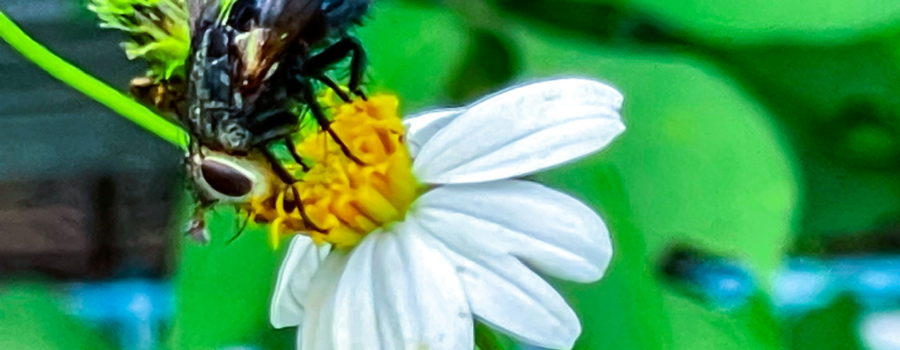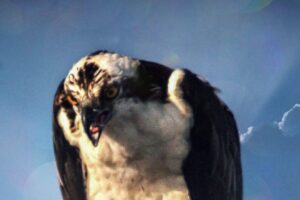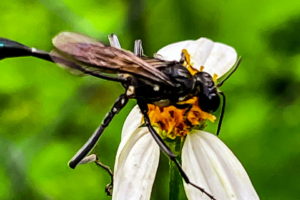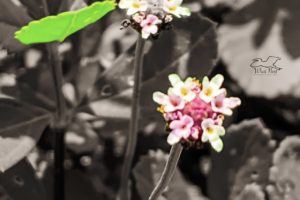Bristle Flies May Not Be Pretty but They Are Great Pollinators

In the search for beautiful pollinators like butterflies, bees, and wasps, I sometimes encounter some insects that aren’t quite so attractive. But attractiveness isn’t a requirement (thank goodness!) for being important to the ecosystem. One such unattractive creature is the bristle fly of the family Tachinidae. There are actually about 10,000 species of bristle flies worldwide but they are all known for two common features. Those features are their bristly bodies and their parasitic larvae. While I was out photographing other pollinators in the late summer, I happened on this one flying from flower to flower in the blackjacks. Honestly, at the time I thought it was some type of bee that I hadn’t seen before, but when I got to reviewing the photos later, I was sure it was a fly of some sort since it had only two wings. With a little research it became obvious that it was a bristle fly, but I wasn’t sure of the species. A bit more research revealed that it was Juriniopsis adusta, which is a bristle fly with no common name, so for the rest of this discussion we’ll try to just call it the bristle fly.

From the looks of it, I was sure that this fly had to be one of those biting flies that we all hate, but I knew it really wasn’t. After all, I found it feeding on nectar. Most nectar feeding flies have mouth parts that aren’t capable of biting animals. The larvae of these guys are a whole different story, though. Although they don’t bite people, they do attack, parasitize, and eventually kill the larvae (and occasionally adults) of other insects. Most of the insects that bristle flies parasitize are garden or crop pests like aphids, grasshoppers, beetles, katydids, and moths, but some of them also parasitize caterpillars of butterflies, including North America’s beloved monarchs. On several occasions, larval bristle flies have been used in agriculture to help deal with heavy infestations of some of these crop pests (especially certain types of moths). There have been mixed results with these experiments, and they aren’t something that farmers do regularly.

Adult bristle flies are not usually imported by agriculturists, but they are generally welcomed as pollinators. Most bristle flies, including Juriniopsis adusta, are not particular about which flowers that the feed on. This is part of what makes them good pollinators since they can pollinate numerous plant species during the course of one flying day. That said, like most nectar eating flies, bristle flies have fairly short mouth parts that end in a sponge-like apparatus, so they are limited to feeding on flowers with short necks. Fortunately, there are plenty of those out there including asters, mints, stone fruits, and daisies among others. Due to their varied diets, Juriniopsis adusta flies also have a pretty large range. In the United States, they can be found from Pennsylvania south through Florida and west as far as California. This fly is also common in many of the southeastern states, as well as Mexico and Central America.

Like many, many other creatures on this earth, the bristle flies are not pretty to look at. In fact, they can be downright scary looking with their bristly bodies and large eyes, but in fact, they are very helpful little insects. Not only do they pollenate a good number of flowers each day, but they also help to control quite a few unpleasant crop and garden pests. I guess it just goes to show that looks can be deceiving.

Do you enjoy beautiful nature photography and artwork? Do you enjoy informative and entertaining nature related content? If so, then you’ll love this blog! Join us to see for yourself!





Recent Comments